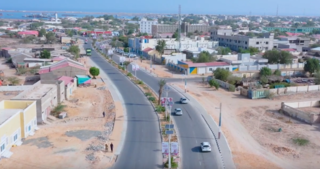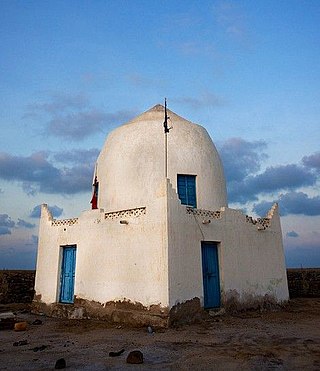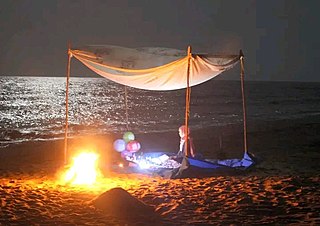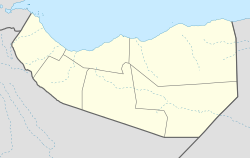
Berbera is the capital of the Sahil region of Somaliland and is the main sea port of the country. Berbera is a coastal city and was the former capital of the British Somaliland protectorate before Hargeisa. It also served as a major port of the Ifat, Adal and Isaaq sultanates from the 13th to 19th centuries.
The Habar Yoonis alternatively spelled as Habr Yunis is a major clan part of the sub-clan Garhajis of the wider Isaaq. As descendants of Ismail bin Sheikh Isaaq, its members form a part of the wider Habar Magaadle confederation which constitutes the largest sub-clan of the Isaaq.

The Isaaq (Somali: Reer Sheekh Isxaaq, is a major clan in Somaliland. It is one of the major clans in the Horn of Africa, with a large and densely populated traditional territories.

Zeila, also known as Zaila or Zayla, is a historical port town in the western Awdal region of Somaliland.
The Garhajis historically known as the Habar Gerhajis is a major clan of the wider Isaaq clan family. They are the traditional holders of the Isaaq Sultanate and Habr Yunis Sultanate since the 18th century. As descendants of Ismail bin Sheikh Isaaq, its members form a part of the Habar Magaadle confederation, and they constitute the largest sub-clan of the Isaaq. The Garhajis are divided into two major sub-clans: the Habr Yunis and Eidagale. They are traditionally nomadic pastoralists, merchants and skilled poets.
The Habr Awal, also contemporarily known as the Subeer Awal, and alternately romanized as the Zubeyr Awal is a major Somali clan of the wider Isaaq clan family, and is further divided into eight sub-clans of whom the two largest and most prominent are the Sa'ad Musa and Issa Musa sub-clans. Its members form a part of the Habr Magaadle confederation.

Ahmad III ibn Abu Bakr was the Emir of Harar (1852–1856). He was the ruling Emir when the British explorer Richard F. Burton visited the city for ten days in January 1855, which he later described in his book, First Footsteps in East Africa.

Heis is a historic coastal town located in the Sanaag region of Somaliland. The town was important for trade and communication with the Somali interior and was used to export frankincense to Arabia.

El-Sheikh is a coastal settlement in the western edge of the Awdal region of Somaliland.
The Habr Je'lo, Arabic: هبر جعلو, Full Name: Mūsa ibn ash-Shaykh Isḥāq ibn Aḥmad,bin Muḥammad bin al-Ḥusayn bin 'Ali bin Muhammad bin Ḥamza bin 'Abdullah bin Ayyub bin Qasim bin Ahmad bin Ali bin Isa bin Ali Akbar bin Hasan al-Askari bin Ali al-Hadi bin Muhammad al-Jawad bin Ali al-Ridha bin Musa al-Kadhim bin Ja'far al-Sadiq bin Muhammad al-Baqir bin Ali Zayn Al-Abidin bin Husayn bin Ali bin Abi Talib al-Hashimi historically known as the Habr Toljaala is a major sub-tribe of the wider Isaaq family. Its members form the confederation along with the Ibran, Sanbuur and Tolje’lo. The Habr Je'lo are divided into three further sub-tribes: the Mohamed Abokor, Musa Abokor, and Omar. Historically, the Mohamed Abokor were chiefly nomadic pastoralists, whereas the Musa Abokor and Omar obtained much of their wealth via their frankincense plantations in the mountainous interior adjacent to the coastline.The Habr Je'lo played a prominent role in the livestock and frankincense trade during the pre-colonial period.
Sharmarke Ali Saleh was a leading 19th century Somali leader, captain, and merchant. He was known as "The African Rothschild " which indicates he was one of the richest man in Africa at that time and also the 'Political Boss of the Somali coast', a title which is a testament to his political influence in the region. He was the governor and ruler of Zeila, Berbera, and Tadjoura between 1841 and 1861, and for a time was known as the richest man along the Somali coast. His descendants would go on to become the traditional leaders of the Musa Arreh sub-clan of the Habr Yunis clan.
The Mohamed Abokor is a Somali clan, and a major sub-division of the muuse sh isxaaq clan of the Isaaq.
Karin is a historic coastal settlement located in the Sahil region of Somaliland.

Siyara was a historic coastal settlement and fort located in the Sahil region of Somaliland. It served as the first capital of the Adal Sultanate following the Muslim resurgence spearheaded by Sabr ad-Din II.
Ruguda, also known as Rakudah is a historic coastal port town located in the Sanaag region of Somaliland, near Heis.
The Musa Abokor is a Somali clan, and a 2 major sub-division of the muuse sh isxaaq clan of the Isaaq clan-family.

The Isaaq Sultanate was a Somali kingdom that ruled parts of the Horn of Africa during the 18th and 19th centuries. It spanned the territories of the Isaaq clan in modern-day Somaliland and Ethiopia. The sultanate was governed by the Rer Guled branch of the Garxajis clan and is the pre-colonial predecessor to the modern Republic of Somaliland.

Sheikh Ishaaq bin Ahmed bin Muhammad bin al-Hussein al-Hashimi, more commonly known as Sheikh Ishaaq or Sheikh Isaaq was the Sayyid forefather of the Somali Isaaq clan-family in the Horn of Africa, whose traditional territory is wide and densely populated.
The Sa'ad Musa or Saad Musa is a northern Somali clan. Its members form a part of the Habr Awal clan of the Isaaq clan family. The Sa'ad Musa traditionally consists of nomadic pastoralists, coastal people, merchants and farmers. The clan inhabits Somaliland, including Maroodi Jeex, and Sahil as well as Djibouti, the Somali Region of Ethiopia and Kenya.
The Sanbur is a major clan of the wider Isaaq clan family. Its members form part of the larger Habr Habusheed confederation along with the Habr Je'lo, Ibran and Tol Je'lo clans. Politically however, the Sanbur fall under the Habr Je'lo clan.











